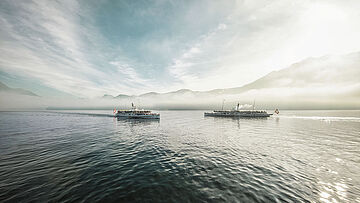
Hybrid energy & drive system
for inland water vessels
More and more attention is being paid to the energy consumption of the drive and on-board systems when dealing with new developments or major overhauls of inland water vessels. Conventional drive and energy systems for passenger ships are characterised by their very high average energy consumption levels. Diesel consumption alone makes up around 35-40% of total ship operating costs for passenger vessels. With this in mind, a reduction of the vessel’s diesel consumption is not only relevant in terms of energy savings or reduced CO2emissions, but is also an economically interesting consideration for the owner.
Project description
In one of the first phases, the operational profile, the real drive performance requirements (direct at the propeller shaft) and the electrical system are measured and then analysed. The components are then designed accordingly. Hybrid energy and drive systems enable smaller components combined with an energy storage system.
The initial investment costs are higher than those of a “conventional energy and drive system”. The electric prime movers, battery packs and control system are important. The lower operating and maintenance costs will see the higher initial investment costs recouped relatively quickly for inland waterway vessels. Experience shows that the payback time is around 3-4 years depending on the design of the system. Shiptec AG has already designed, installed and put into operation several hybrid energy and drive systems and been able to monitor them in operation, giving us a wealth of experience.
Goals
The new, highly efficient energy and drive system should fully cover the various operational purposes of the ships. For route operation, for example, these are a very fast reaction time to performance and speed requirements, high availability level of the on-board power supply and drive, high operational and emergency operating characteristics, very high level of energy efficiency, low overall costs and reliable crash stop behaviour (<3.5x DWL).




![[Translate to Englisch:] [Translate to Englisch:]](/assets/_processed_/b/f/csm_image00016_dbc085d159.jpeg)
![[Translate to Englisch:] [Translate to Englisch:]](/assets/_processed_/6/2/csm_Anfahrten_14f1c9565f.jpg)
![[Translate to Englisch:] [Translate to Englisch:]](/assets/_processed_/1/1/csm_Dashboard1_20ebb3e39a.jpg)
![[Translate to Englisch:] [Translate to Englisch:]](/assets/_processed_/8/8/csm_IMG_4354_6eb179754f.jpg)



